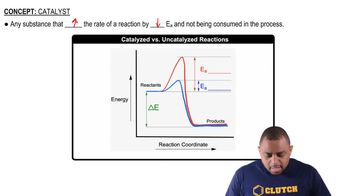Here are the essential concepts you must grasp in order to answer the question correctly.
Equilibrium Constant (Kc)
The equilibrium constant (Kc) is a numerical value that expresses the ratio of the concentrations of products to reactants at equilibrium for a given reaction at a specific temperature. It provides insight into the extent of a reaction; a Kc greater than 1 indicates that products are favored, while a Kc less than 1 suggests that reactants are favored. In this case, Kc = 7.20 indicates that at equilibrium, l-b-lysine will be present in a higher concentration compared to l-___-lysine.
Recommended video:
Equilibrium Constant Expressions
Le Chatelier's Principle
Le Chatelier's Principle states that if a dynamic equilibrium is disturbed by changing the conditions, the system will adjust itself to counteract the change and restore a new equilibrium. This principle is crucial in predicting how changes in concentration, temperature, or pressure will affect the equilibrium position of the reaction between l-___-lysine and l-b-lysine when catalyzed by lysine 2,3-aminomutase.
Recommended video:
Catalysis
Catalysis is the process by which the rate of a chemical reaction is increased by a substance called a catalyst, which is not consumed in the reaction. In this scenario, the enzyme lysine 2,3-aminomutase acts as a catalyst, facilitating the interconversion of l-___-lysine and l-b-lysine without altering the equilibrium concentrations. Understanding the role of the catalyst is essential for analyzing the kinetics and dynamics of the reaction.
Recommended video:
Catalyzed vs. Uncatalyzed Reactions
 Verified step by step guidance
Verified step by step guidance

